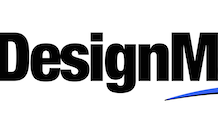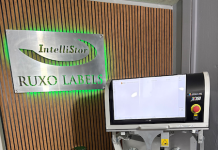According to Focus Label Machinery, sustainability is becoming a strong factor for retailers wanting to ensure their business image reflects the need to reduce impact on the environment. In turn suppliers and manufacturers are doing the same with retailers auditing their processes to ensure they meet social and environmental needs.
The fast changing sports, fashion and home furnishing sectors are leading the drive towards new technology. Where the overall volume and variety of textiles consumption is increasing, the individual order volumes are decreasing. Savvy consumers are being led by traditional media, digital advertising and influencers on social media.
The pandemic may be behind us, but the impact on the supply chain is still with us with raw materials and parts shortages affecting delivery schedules. Increasing shipping cost and transport delays have led to several businesses re-evaluating their global sourcing operation and making commitments to re-opening selective manufacturing closer to Europe and United States.
As the global situation improves, digital printing and production is growing at a fast rate in the textile and garment industry, even more so with the present pressures on fast turn-around for smaller unique orders. The textiles industry is having to respond quicker in meeting retail needs.
What about the label supplies?
Currently the dominating methods in printed apparel label applications are covered by Analogue Letterflex/Flexo for volume production or digital thermal foil printing for smaller runs.
The technical challenges in developing any new advances in digital technology are wide ranging and the following needs to be considered.
– Inks must meet safety standards where direct contact with skin is involved or if it’s been used in children’s clothing.
– High wash resistance standards require 30+ washes.
– Ability to print with high resolution/definition on a wide range of different fabrics.
– Seamless job changes.
– Integration with other technologies, like RFID.
– Running costs (consumables such as inks, foil).
– Capital investment cost.
The benefits in a digital solution that provides efficiency through faster changes, flexibility, quality and meets the above challenges is a tall order. There are three main types of digital label printing. The first is thermal foil transfer. The second is CMYK inkjet scanning which can be direct to the textiles or through a sublimation paper. Finally single pass digital ink jet is seen as the method to meet higher productivity needs of the industry.
1) Digital thermal transfer printing
This technology is common in label printing, having been available for 40 years in various forms. It involves using thermal transfer techniques to melt ink foil onto the fabric, resulting in an image transfer. Today, they are digitally controlled, leading to greater efficiency and accuracy. This method flaunts compatibility with a wide range of fabric substrates.
Whilst the quality of this process is high, the drawback is that foil stamping is quite wasteful. The thermal part of the process destroys the foil with as much as 90% of the foil value lost in waste. Consumable costs are high. Production speed is slow. Even so, this type of machine is still the go-to option for many garment producers, particularly those who choose to work entirely in-house. Colours are limited to black and red for garment label applications.
2) CMYK scanning (full colour dye sublimation)
If polyester is your material, this digital solution may be for you. Although quite slow, full colour is possible, and the image quality is sharp and vivid. The main drawback is that cottons and other non-polyester fabrics have limited use with this printing method, so it has a very specific purpose. Typically, this equipment is used for production of flags, sportswear and promotional textiles. Production speed is slow and consumable costs are high while equipment investment levels are moderate. These machines are used in a wide range of applications, but rarely used for narrow web label applications.
3) Digital inkjet
Single-pass inkjet technology is a truly exciting area of development. The advances in wide web textile printing can already be seen with various brands presenting commercial solutions for furnishings and fashion. Today’s digital inkjet machines can offer the same sort of volume output as analogue printing, but boast all the flexibility, advanced graphic capabilities, software and control that digital can offer.
As more garment production lines takes on digital technology through production, supply chains, traceability or logistics, label producers will also need to adopt digital technology. Making the switch to digital in other areas of their business and seeing the benefits means they’ll demand the same type of solution for textile labelling. Manufacturers of fabrics, coatings and inks will get on board and those early adopters will benefit long term.
Those sticking solely with analogue presses are at risk of struggling to keep up with rising costs of production balanced against shorter run lengths. The speed of new digital machines and seamless job changes will prove this.
FOCUS LABEL MACHINERY
jamesb@focuslabel.com
https://www.focuslabel.com





















